At Crackle Kitchen in Bengaluru, Chef Vivek Salunkhe recreates flavours from his childhood
Chef Vivek Salunkhe brings Mangalorean and Konkani dishes from his childhood to life and presents them using French cooking. The omakase-style dining is intimate, but there’s always space for more food.
When it comes to seasoning the protein, Chef Vivek Salunkhe believes in this mantra: Don’t kill the bird. In other words, don’t marinate the meat to the point that it masks its flavour.
The learning from under the tutelage of Chef Raymond Blanc, who has trained celebrity chefs including Marco Pierre White, Sat Bains, and Heston Blumenthal, is well reflected in Chef Salunkhe’s cooking, wherein he uses the fusion of flavours to crown the king of any dish: the protein.
Whether it’s balancing the subtle yet sweet flavour of green-lipped mussels with a peppery Kerala broth or contrasting the flavour-packed and juicy lamb with a risotto-khichdi, Chef Salunkhe knows how to fuse the East and the West on a plate.
“Indian, Japanese, and French people are very clear about one thing when it comes to cooking—they don’t like to mix up too many things and hide the flavour,” he explains in a conversation with YS Life.
At Crackle Kitchen, Bengaluru, Chef Salunkhe has explored the food of Western Ghats through French and Japanese culinary techniques. Opened in November last year, the restaurant’s omakase-style dining derives a lot of flavours from Mangalorean and Konkani cuisines, based on Salunkhe’s culture and upbringing, and presents it like a street seller in Bangkok—displaying the produce on the kitchen counter like a buffet.
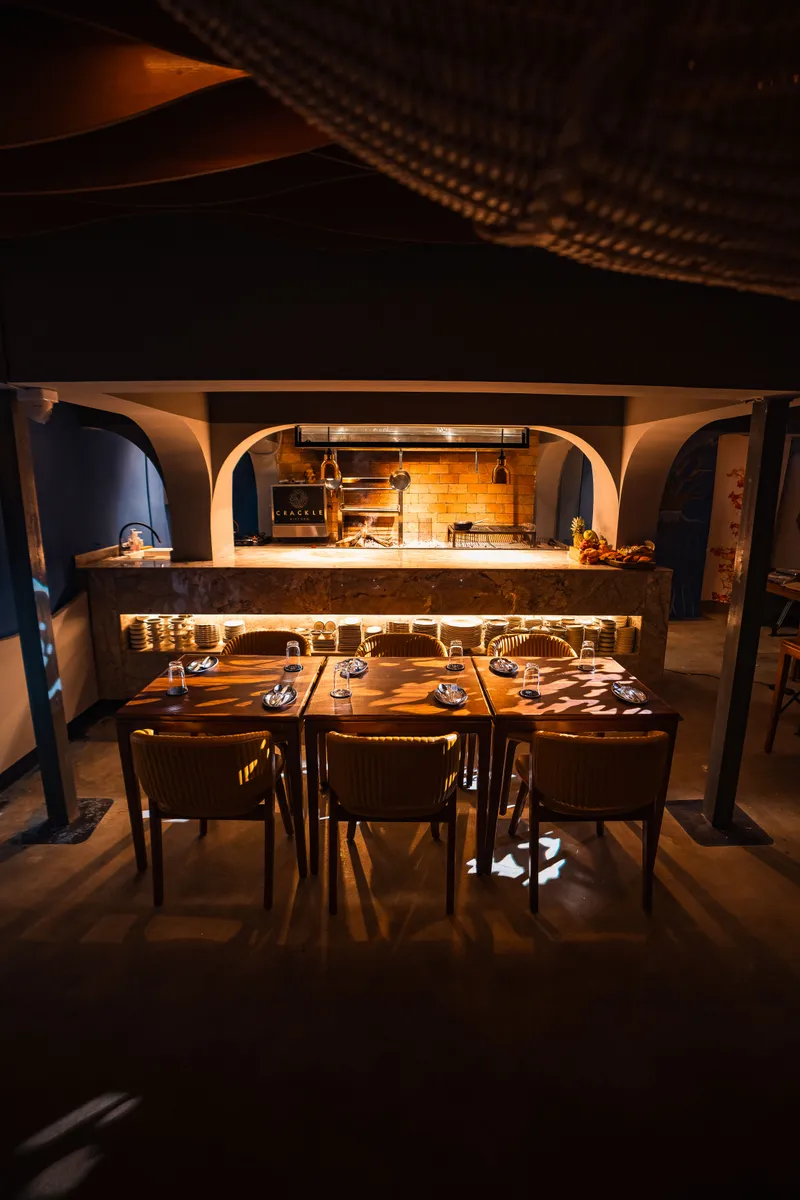
The intimate, 22-seater restaurant is engulfed in the theatrics of cooking, with the fresh produce stacked on the counter, the flames roaring behind, and the chefs butchering about.
“When you see someone cook, it’s definitely theatrics. Where there is fire, there is theatre. But we have not purposefully created a theatre here. It’s something we have tried to bring very naturally,” he says.
The chef, who has worked at kitchens including Tower Kitchen, Skyye, and Blimely, and took creative control at Dofu with its take on ‘chukka Chinese’ cuisine, considers butchery the most important skill to master. This harks back to his introduction to the culinary world when, as a teenager, he would help out at his grandfather’s chicken farm at Karjat, Maharashtra.
“I started observing my ustaad; the way he cut his meat and how he hung it intrigued me. Everything was so neat and systematic. I started by cutting keema and soon got the hang of the job. By the age of 17, I could fillet a whole lamb,” Salunkhe recalls.
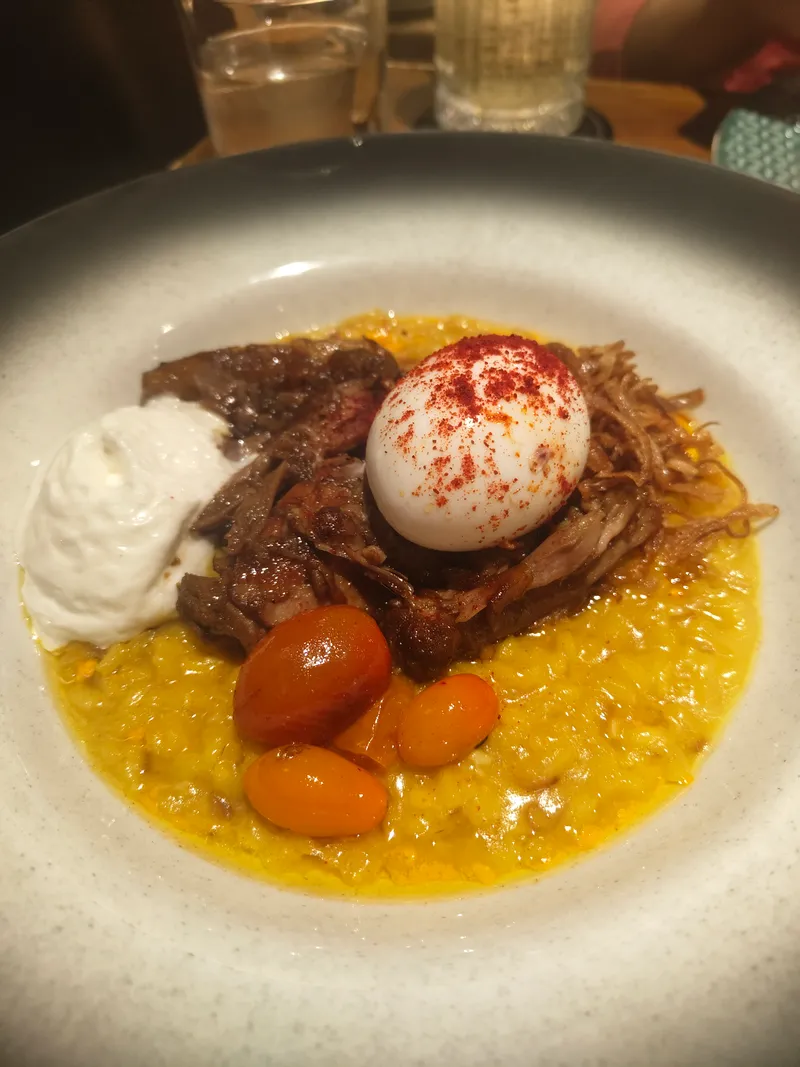
Gardan Ki Tehri
The passion for the skill, which he considers art, sizzles in Crackle’s kitchen. Take the Legend Steak, wherein an Indian marbled steak is paired with king mushrooms and wine tomatoes. Its juice satiates your palate, but only enough to reach out for the next bite.
“I have eaten the best steaks in the world—from Kobe to Argentinian. But India is no less when it comes to steaks. I think Indian steaks have their own flavour, which is much more nutty than the imported steaks,” he explains.
It’s part of Crackle Kitchen’s ongoing Steak & Wine programme, with offerings such as Tomahawk Steak with bone, where marbling is dominant, and the Cheataurbriand. All steaks are cooked medium.
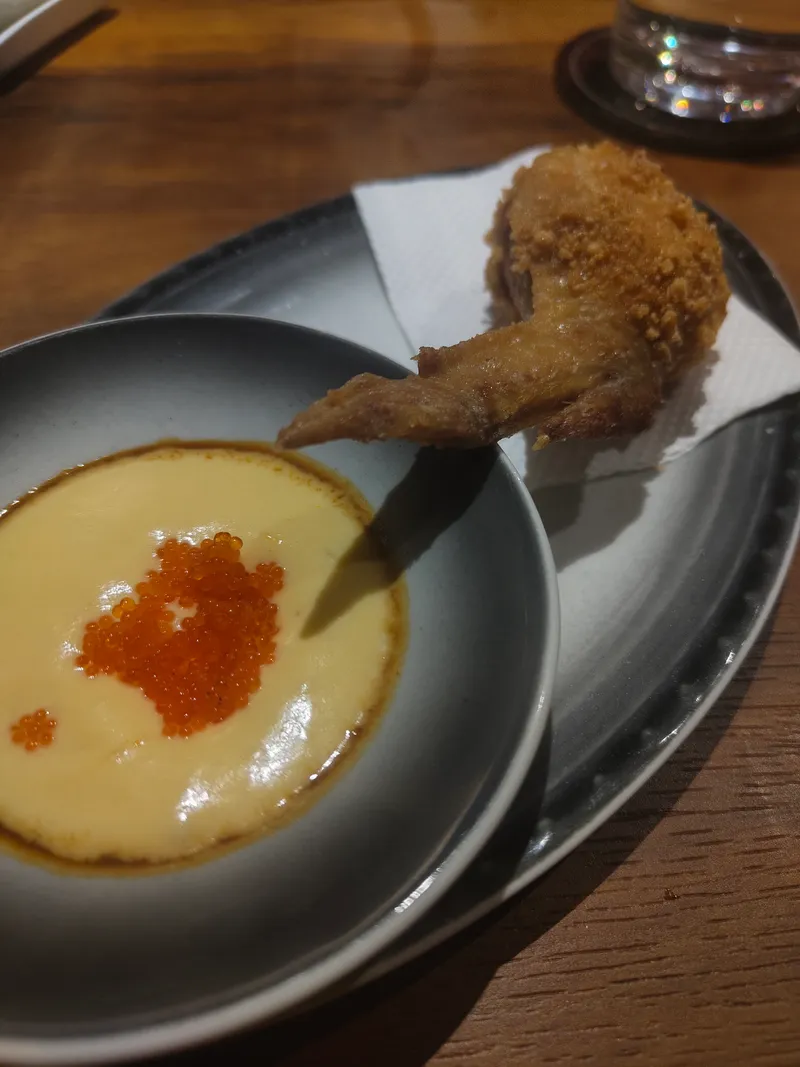
Claw & Caw
But beyond the land meat, the menu shows the chef’s fascination with seafood. He grew up on the south side of Mumbai, in a 150-year-old British house, and was always fascinated by sweeter-tasting prawns found near Sassoon Docks. He decided to revisit the flavour with the dish, Claw & Caw.
He recreated the flavour by mixing lobster and chicken and creating fried chicken, pairing it with a fishy yet sapid sauce brewed using lobster head and shells and teriyaki sauce. The sauce is topped with tomalley butter, created with crab brains and unsalted butter.
“There are some flavours which become a memory in your head, and I like to rediscover those flavours,” he says.
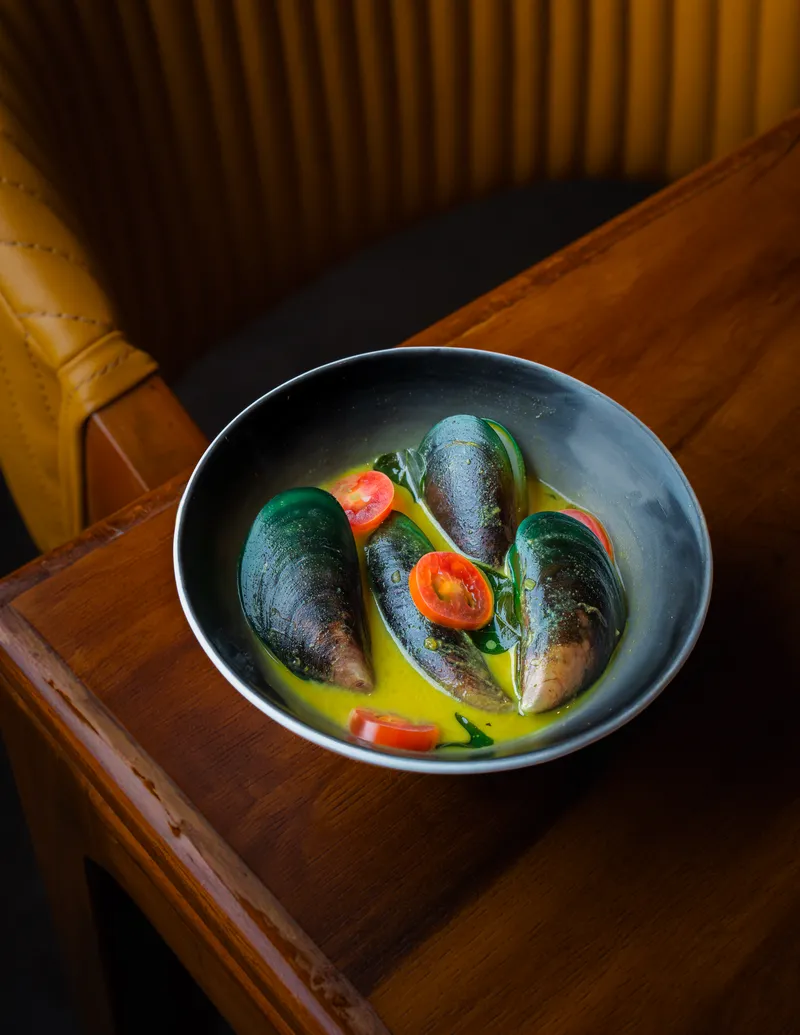
Moules Moilee Marinière
The Moules Moiley also reflects Chef Salunkhe’s French influence. The mussels are cooked for a mere 10 seconds, and not a second later or else they overcook. The dish is prepared in the classic matignon French cooking style, with the mussels garnished with a garden of vegetables, and served with a broth that is an elixir to sore throats. Most of the flavour comes from white wine, and though you’re hit first with smoky pepper, the chilli stays with you.
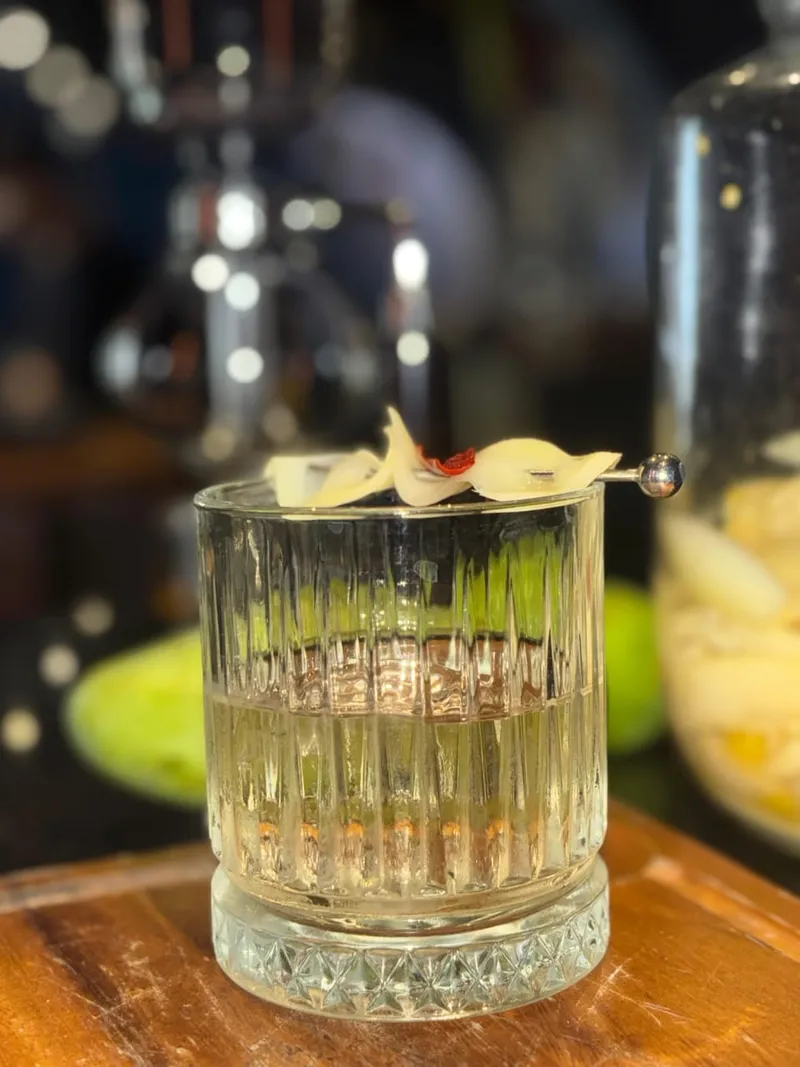
Golden Brine
At Crackle Kitchen, the food is paired well with cocktails concocted by Somingam Mangkung (Prince), especially Golden Brine, which is his grandmother’s recipe. The raw mangoes are pickled with spices and apple cider vinegar, and the sourness of raw mangoes stays with you long after you’ve had the drink.
The hospitality at Crackle Kitchen is very personal, and perhaps that comes with the omakase theme.
The phrase ‘omakase’ translates to ‘I leave it up to you’, and is used to explain dining at Japanese restaurants where the customer leaves it to the chef to choose and serve seasonal specialities.
The dining trend is relatively new to Bengaluru, with only Nasi and Mee and Ma La Kitchen championing the concept of private dining in the city as of yet.
Chef Salunkhe has been doing pop-ups since the early 2000s and has great expectations from the mature Indian diners.
“At this point, the kind of audience we have in India is amazing. They’re so versatile, well-travelled. Their aspirations are changing. It could be omakase, a set menu, or just a kiosk flipping burgers or serving grilled vada pavs, or anything—if it’s really good quality or well-priced, anything today in F&B is going to do well. India is game for anything,” he proclaims.
Crackle Kitchen’s dining may be intimate, but the food on the table is bountiful. A sculpture of a cornucopia, known as the ‘horn of plenty’, hangs from the ceiling, symbolic of what the chef hopes the diners fill up with: plenty of food, and plenty of stories.
Timings: 7 PM to 12 AM
Cost for a meal: Rs 3,000 per person (excluding alcohol)
Edited by Swetha Kannan







